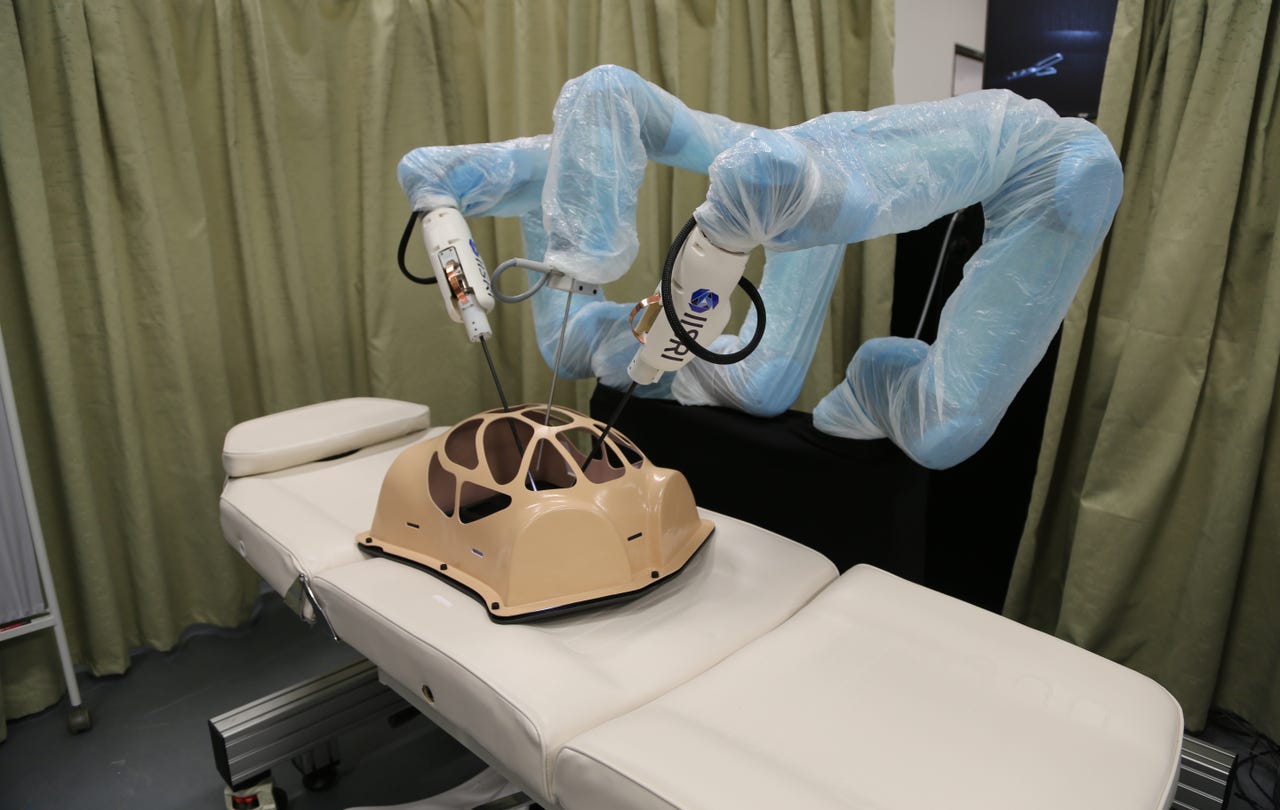Deakin University unveils first robotic surgical system with sense of touch in Australia

Deakin University in Melbourne has unveiled the HeroSurg robot, which gives surgeons, for the first time in Australia, the sense of touch while they perform surgery via a computer.
Unveiled on Wednesday at the Australasian Simulation Congress, the university claims HeroSurg to be a major breakthrough compared to current technology, which limits robotic surgery to the sense of sight.
Giving surgeons the added sense of touch through technology known as haptic feedback means laparoscopic or keyhole microsurgery will be safer and more accurate by reducing trauma and lowering the risk of blood loss and infection.

HeroSurg is the world's first robot that provides surgeons the sense of touch
HeroSurg was developed in the laboratory at Deakin's Waurn Ponds campus in Geelong by engineers from Deakin and Harvard, along with professor Suren Krishnan, who in 2008 became the first Australian surgeon to use the da Vinci surgical system for ear, nose, and throat procedures.
Krishnan, from the Royal Adelaide Hospital and an honorary professor at the Deakin Institute for Intelligent Systems Research and Innovation (IISRI), said HeroSurg's added sense of touch improves the ability of surgeons to distinguish between normal tissue and tissue affected by cancer.
"The major drawback of the current system is the lack of tactile feedback," Krishnan said in a statement. "Tactile feedback allows a surgeon to differentiate between tissues and to 'feel' delicate tissues weakened by infection or inflammation and dissect them more carefully. Tactile feedback will allow us to use finer and more delicate sutures in microsurgery."
The project's lead researcher and haptics expert, Dr Mohsen Moradi Dalvand, said the haptic feedback allows for specific manoeuvres and diagnoses to be performed with greater confidence.
"HeroSurg's unique features, which allow it to overcome many of the limitations of existing robotic laparoscopic systems, include collision-avoidance capability, modularity, and automatic patient/bed adjustment," Dalvand said in a statement.
"The automatic collision avoidance enables surgeons to operate with peace of mind and confidence that there will be no collision with instruments, the robot's arms, or the laparoscope with the patient."
Other HeroSurg features include high-resolution 3D images, an increased range of motion for the surgeon, and a more ergonomic workstation console.
HeroSurg workstation console.
"HeroSurg will assist surgeons to perform demanding surgical procedures with comfort, accuracy, and safety by providing real-time collision avoidance for medical instruments, and stereo-endoscopic vision," Dalvand said.
IISRI director Saeid Nahavandi pointed out that HeroSurg could even be used remotely, meaning that surgeons could perform surgery thousands of kilometres away from the patient.
After laboratory testing in partnership with medical experts, the project is ready for human trials. Deakin University plans to bring the technology into the Australian health system over the next few years.
A study last month by medical journal The Lancet found that robots are just as effective as human surgeons after a trial in the Royal Brisbane and Women's Hospital, which saw 308 men with localised prostate cancer randomly assigned to have either robotic surgery or open surgery.
"Surgery has long been the dominant approach for the treatment of localised prostate cancer, with many clinicians now recommending the robotic method to patients," said lead author Robert Gardiner, University of Queensland Centre for Clinical Research, in a statement.
"Many clinicians claim the benefits of robotic technology lead to improved quality of life and oncological outcomes."
The patients who received surgery via robotics lost less blood during the procedure, had a shorter stay in the hospital, and reported better physical quality of life six weeks after the surgery.
Physical quality of life 12 weeks after the operation was similar between those operated on by humans and those by robots, with the long-term outcome yet to be reported.
Update: The HeroSurg is the first robot with tactile feedback in Australia, not worldwide. US Medical device company TransEnterix has had an approved robot with this feature on the market for some time.